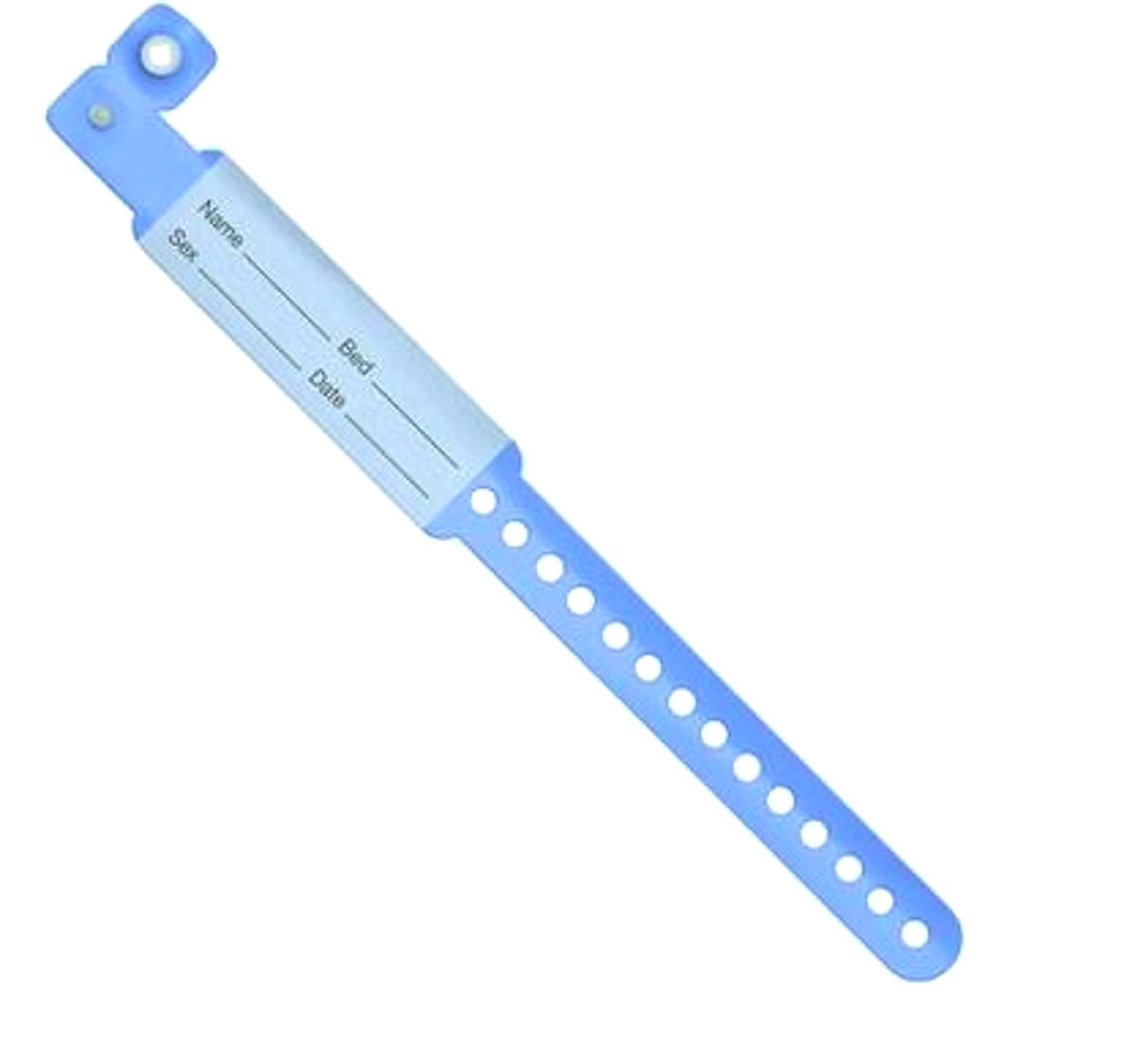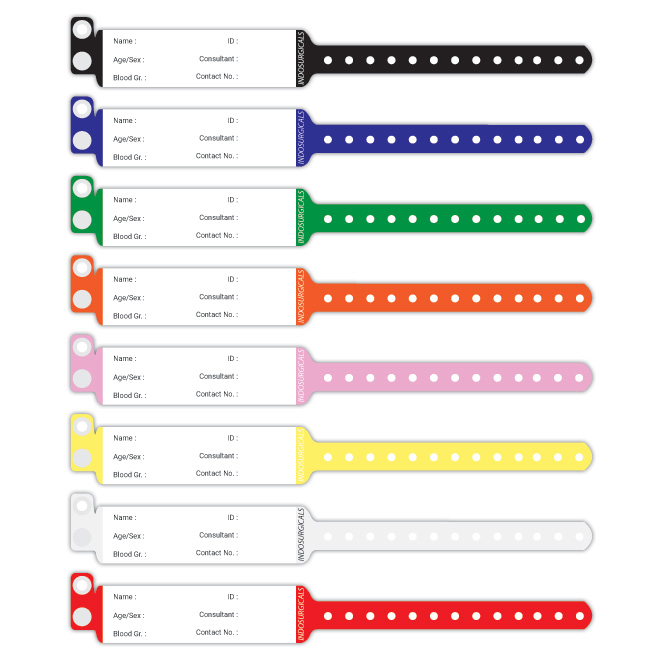How to Choose the Right Patient Identification Band for Your Healthcare Facility
How to Choose the Right Patient Identification Band for Your Healthcare Facility
Blog Article
Exploring the Different Sorts Of Patient Identification Band Made Use Of in Clinical Facilities
In the elaborate world of health care, the critical role of Patient Identification bands typically goes unnoticed. These bands, varying from simple paper wristbands to advanced RFID bands, develop the foundation of Patient security methods, guaranteeing accuracy in Patient Identification. Yet, the substantial diversity of these bands, each with its unique benefits and limitations, is frequently ignored. As we navigate through this topic, one may gain insight into the refined complexities and vital relevance of such bands in medical facilities.
Comprehending the Significance of Patient Identification Bands
While they might appear like plain accessories, Patient Identification bands play an important role in medical facilities. These bands offer as a vital device for confirming Patient identification, stopping clinical mistakes connected to misidentification. Patient Identification bands additionally aid in enhancing management jobs, making certain accurate record-keeping and billing.
Traditional Paper Wristbands: Their Usage and Limitations
Standard paper wristbands have been a staple in Patient Identification across numerous medical centers. While their usage is widespread, they harbor specific restrictions that may influence their performance in Patient administration. This area will concentrate on the range of their application and the fundamental drawbacks connected with their use.
Paper Wristbands: Usage Range
In the world of Patient Identification, paper wristbands have long held an essential function. These bands are normally utilized in outpatient setups, where the Patient's stay is short-term. The wristbands include crucial info such as the Patient's name, date of birth, and a distinct Identification number. This basic, yet reliable system, enables physician to rapidly and properly recognize clients, guaranteeing the correct therapy is administered. Paper wristbands are likewise used in emergency situation circumstances, where quick Identification is vital. Their use extends to occasions like blood contribution drives and mass inoculation programs, additionally highlighting their flexibility. In spite of innovations in innovation, the simple paper wristband stays a economical and dependable solution for Patient Identification in various health care circumstances.
Limitations of Paper Wristbands
Regardless of their extensive use, paper wristbands are not without their downsides. In addition, paper wristbands often do not have the technological abilities of even more modern-day options, such as barcoding or RFID chips, limiting their capability to simply displaying created details. Paper wristbands can cause pain or skin inflammation to some individuals, especially when worn for extensive periods.
Barcoded Wristbands: Advancements in Patient Identification
While Patient Identification has actually long been a critical aspect of health care, the introduction of barcoded wristbands represents a considerable leap forward. These bands leverage the simpleness of barcoding technology, enabling Patient details to be quickly scanned and accessed. They improve the rate and accuracy of Patient Identification, minimizing the threat of medical mistakes associated to misidentification. Barcoded wristbands are cost-effective, very easy to produce, and get rid of handwriting errors common with manual systems. They are not without restrictions. While they offer improvements over typical bands, the barcode can end up being smudged or worn, rendering it unreadable. Regardless of this, barcoded wristbands stay a necessary device in contemporary healthcare settings, signifying the crossway of innovation and Patient treatment.
Radio Frequency Identification (RFID) Bands: an Action In The Direction Of Futuristic Medical Care
The evolution of Patient Identification bands has actually caused the appearance of Superhigh frequency Identification (RFID) Bands (patient identification band). These ingenious tools present key advantages for healthcare centers, offering an extra efficient and technologically advanced methods of Patient Identification. The execution of RFID in health care is a considerable action towards an extra advanced method to Patient monitoring and safety and security
Comprehending RFID Bands

RFID Bands: Secret Advantages
Mainly, these bands improve Patient safety and security by supplying precise, rapid Identification, thereby minimizing medical errors. RFID bands can keep a vast quantity of Patient data, consisting of medical history and allergic reactions, making it possible for individualized treatment. Generally, RFID bands stand for a substantial innovation in Patient Identification find more info modern technology, benefiting both individuals and health care companies.
Executing RFID in Healthcare
As we tip right into a technically advanced era, the execution of RFID bands in health care comes to be significantly crucial. These bands provide a smooth means to track and recognize people, guaranteeing their safety and security and enhancing efficiency in therapy procedures. RFID bands offer countless benefits over standard Identification methods. They can store a vast amount of data, consisting of the Patient's case history and therapy plans, which can be easily accessed by medical care companies. This information assists doctors make educated choices concerning the Patient's therapy strategy. RFID bands decrease clinical mistakes by providing accurate Patient Identification, which is crucial in preventing misdiagnosis or incorrect medication management. Therefore, the implementation of RFID bands is a significant step in the direction of improving Patient safety and security and health care delivery.

Color-Coded Wristbands: Assisting in Quick and Accurate Medical Diagnosis
In the busy environment of a medical facility, color-coded wristbands have emerged as vital devices for swift and precise Identification of an individual's clinical problem. These wristbands, used by clients, find this lug details colors that match to different medical problems or statuses. As an example, red can indicate allergic reaction risks, while yellow might signify an autumn risk. This system is developed to offer prompt visual cues to medical care suppliers, boosting Patient security and care top quality. In emergency situation situations, using these wristbands allows for quick decision-making. However, the effectiveness of color-coded wristbands depends on the harmony of color analysis throughout health care institutions, calling for typical criteria for regular application.
Strategies for Effective Application and Management of Patient ID Bands
Attaining ideal use Patient Identification bands requires a well-structured approach for their application and monitoring. The primary step entails training all wellness personnel on the significance of appropriately applying and reviewing these bands. Health centers must systematize the usage of ID bands throughout all divisions, making certain uniformity and reducing inconsistencies. Routine audits should be conducted to confirm adherence to policies and to remedy any type of variances. Patient education and learning is additionally crucial; patients must comprehend the objective article of the bands and the requirement for their consistent wear. patient identification band. It's crucial to have a back-up strategy in place, such as barcode scanning or biometrics, to guarantee that Patient Identification is never ever endangered.
Verdict
Patient Identification bands are crucial in medical centers to make sure safety and security and precision. Typical paper, barcoded, RFID, and color-coded wristbands each hold special advantages, ranging from cost-effectiveness to advanced information storage space and instant clinical alerts. Effective application and management of these bands can significantly lower clinical mistakes, increase performance, and boost overall Patient care. Hence, understanding and making use of these Identification tools is paramount for preserving high requirements in healthcare.
These bands, varying from simple paper wristbands to innovative RFID bands, create the backbone of Patient security methods, making certain accuracy in Patient Identification.The advancement of Patient Identification bands has brought concerning the introduction of Radio Regularity Identification (RFID) Bands. On the whole, RFID bands represent a considerable development in Patient Identification modern technology, profiting both people and healthcare providers.
RFID bands minimize medical mistakes by providing precise Patient Identification, which is important in avoiding misdiagnosis or wrong medication management. Patient education and learning is additionally crucial; patients should recognize the function of the bands and the need for their continuous wear.
Report this page